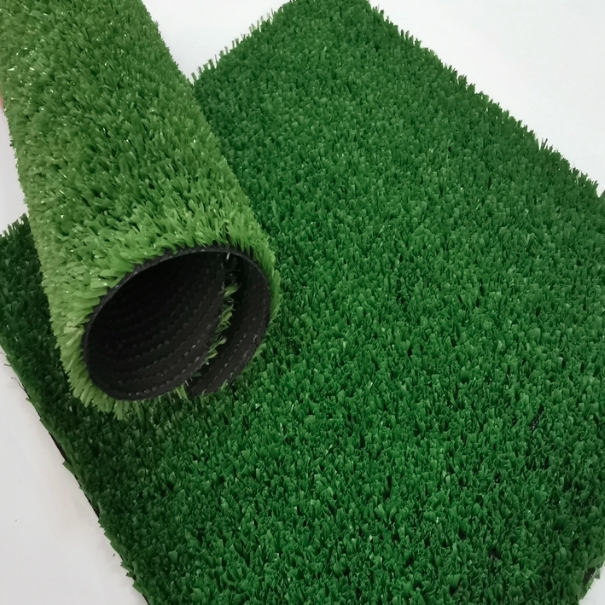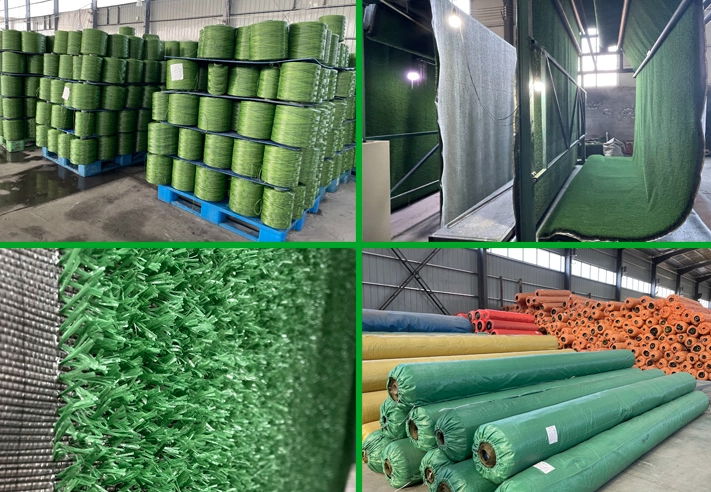
Cutting artificial grass may seem simple at first glance, but it requires planning and precision. Unlike natural turf, mistakes don’t correct themselves; you can’t rely on regrowth to hide imperfections. A clean, precise cut ensures your lawn looks tidy, seamless, and professional. Whether resizing rolls, fitting around curves, or working near obstacles, the right techniques make all the difference. This guide covers every step—from tools and preparation to cutting methods and expert tips—to help you achieve flawless results.
Why Cutting Artificial Grass Correctly Matters
Cutting synthetic turf accurately isn’t just about aesthetics. It affects the entire performance and durability of your lawn.
Sharp edges: Clean cuts keep the grass edge neat, avoiding a ragged or frayed look.
Seamless joins: Correct cuts hide seams, giving the appearance of one continuous lawn rather than multiple pieces.
Accurate fit: Turf must align perfectly around patios, flowerbeds, trees, and posts. Misalignment can cause gaps or overlapping edges.
Long-term stability: Poor cuts can lead to curling edges, lifting, or uneven surfaces over time, which can become costly to fix.
Reduced waste: Accurate cutting prevents turf wastage, helping you save money on materials and installation time.
Even small mistakes in cutting can be highly visible, making careful work essential.
Essential Tools for Cutting Artificial Grass
Having the right tools makes cutting artificial grass much easier, faster, and safer. Using appropriate equipment not only improves accuracy but also helps reduce turf waste and prevents mistakes. Several key items can make a noticeable difference in both DIY and professional installations.
Knives and Cutting Tools
The most important cutting tool is a utility knife or Stanley knife, which handles the majority of straight and detailed cuts. It’s crucial to use a sharp blade because dull blades can fray fibers, damage the turf backing, and slow down your work. For trimming small sections or edges, heavy-duty scissors are useful, but they should not be used for large cuts since they can bend or fray the fibers. For larger projects that involve curves or soil removal, a turf cutter is ideal; it speeds up cutting and ensures more consistent edges. When creating serpentine or S-seams, a framing tool or S-seam tool is highly recommended, as it allows precise cuts, hides joins, and prevents the mohawk effect along seams.
Measuring and Guiding Tools
Accurate measurement is key to a neat installation. A tape measure ensures you measure multiple times and minimize gaps or overlapping seams. For straight cuts, a straight edge or chalk line provides a reliable guide, helping you create long, uniform cuts. When cutting curves, circles, or more complex shapes around trees, posts, or garden features, a compass or specialized templates are useful to maintain smooth, consistent shapes.
Safety Equipment
Working with sharp blades and kneeling on turf for long periods can be physically demanding and risky. Wearing gloves protects your hands from cuts and reduces fatigue during prolonged cutting sessions. Knee pads provide comfort and support, making it easier to work on hard or uneven surfaces without straining your knees. Using proper safety equipment ensures a safer and more efficient cutting process overall.
Preparing for Cutting Artificial Grass
Preparation forms the foundation of a successful artificial grass installation. Skipping preparation steps often leads to visible seams, wasted turf, and unnecessary frustration during the cutting and laying process. Taking time to measure, design, and trim the turf properly ensures a smooth, professional finish.
Measuring the Area
Accurate measurement is critical for a neat and efficient installation. You should always measure twice before making any cuts to ensure the dimensions fit corners, curves, flowerbeds, patios, or other irregular areas. Planning the placement of each turf roll in advance helps reduce the number of seams, resulting in a natural and uninterrupted lawn appearance. Marking the areas directly on the backing with chalk before cutting provides a clear guide, minimizing mistakes and ensuring that each cut aligns perfectly with your layout.
Design and Layout
Good design and layout planning are essential because once a cut is made, it cannot be undone. Begin by drawing a simple layout that shows the position of each piece of turf and includes obstacles like trees, posts, flowerbeds, or edging. Carefully decide where joins will fall to make seams less noticeable, as fewer joins create a more seamless and natural look. Taking the time to plan the layout thoroughly saves both turf and time, reducing waste and improving the overall aesthetic of your lawn.
Trimming the Backing (Selvedge)
Artificial grass rolls often feature extra backing extending beyond the fibers, known as the selvedge. If the selvedge is not trimmed, it can lead to a mohawk effect, where the blades clump together and rise higher than the surrounding turf, creating an uneven edge. To prevent this, trim 2–3 stitches past the selvedge before installation. Properly trimming the backing ensures the turf edges lay flat and look natural, contributing to a clean, professional finish.
How to Cut Artificial Grass: Techniques
Different cutting techniques are used depending on the area, shape, and type of installation.
Cutting Straight Lines
Always cut from the backing side. This avoids cutting yarns and keeps edges clean.
Cut between stitches, not through them, to prevent weakening the turf.
Maintain a consistent distance if two pieces meet; this allows perfect joins.
Use a straight edge or chalk line for guidance. Smooth, steady pressure produces the best results.
Cutting Curves and Corners
Gradual, small cuts work best for curves around flowerbeds, patios, or edging.
Use the tip of your blade as a guide along objects.
Avoid one large cut in tight curves; cut little by little.
Check progress regularly to ensure a proper fit.
Creating S-Seams (Serpentine Cuts)
S-seams hide joins better than straight cuts. The wavy pattern blends turf fibers, making seams almost invisible.
Overlapping slightly prevents the mohawk effect.
Requires a framing tool or template. Both pieces should be cut simultaneously for perfect alignment.
Cutting Up to an Edge
Lay turf over the edge, then fold it back slightly.
Cut in small sections, pulling excess away gradually.
For walls or patios, cut horizontally while folding back.
Reposition turf every few inches to ensure a snug fit.
Cutting Around Obstacles
Trees, posts, and drains require careful cutting:
Cut a straight line from the turf edge to the obstacle.
Make an “X” at the base for trees or posts.
Slide turf into place and cut in small increments.
Use seam tape if necessary to secure joins.
Cutting Circles (Golf Holes or Round Features)
Mark the circle with chalk first.
Cut an “X” in the center and remove pieces gradually.
Ensure blades remain intact to avoid fraying.
Take your time; cutting circles requires utmost precision.
Tips for Perfect Artificial Grass Cuts
Cutting artificial grass perfectly requires more than just sharp tools—it also needs careful technique and attention to detail. Following a few expert tips can make a significant difference in achieving clean, professional results.
Keep Blades Sharp
Before starting any cutting, always make sure your blades are sharp. Dull knives or utility blades can tear the turf fibers, fray the edges, and make the cutting process slower and more frustrating. Regularly replacing or sharpening blades ensures smooth, precise cuts and helps maintain the quality of your artificial grass.
Work with the Roll Upside Down
When cutting, it’s best to place the turf roll upside down. This orientation allows better control, lets you follow marked lines accurately, and helps maintain the natural alignment of the yarns. Cutting from the backing side also reduces the risk of damaging the grass fibers, leaving a cleaner edge for joins and seams.
Cut Gradually in Small Increments
Take your time when working on curves, corners, or around obstacles. Cutting in small increments allows for more precise shaping and reduces mistakes. Gradual cuts make it easier to follow complex patterns, such as around trees, flowerbeds, or patios, and help achieve a professional-looking finish without frayed edges.
Align Pile Direction
When joining two or more pieces of turf, make sure the pile direction matches perfectly. Misaligned fibers are very noticeable and can make seams stand out, even if the cuts themselves are clean. Proper alignment creates a natural flow across the lawn and hides joins effectively.
Brush Fibers Upright
After cutting, use a stiff brush or broom to lift the fibers upright. This simple step helps hide cut edges and blends the turf seamlessly. Brushing also improves the overall appearance and maintains the natural look of your artificial grass.
Keep Spare Blades Handy
Always have spare blades nearby. A fresh blade improves precision and reduces the risk of tearing or fraying. Replacing blades as needed ensures every cut remains clean and professional, especially on larger projects where multiple rolls or complex cuts are involved.
![Economic Artificial Grass Economic Artificial Grass]()
Common Mistakes to Avoid
| Mistake | Effect | How to Avoid |
| Cutting from pile side | Jagged, frayed edges | Always cut from backing |
| Using scissors for main cuts | Bent fibers | Use utility knife |
| Rushing curves | Uneven fit | Cut gradually, in stages |
| Leaving selvedge | Mohawk effect | Trim 2–3 stitches past edge |
| Skipping measurement | Wasted turf, visible seams | Measure twice, plan layout |
FAQ
What is the best way to cut artificial grass?
The best way to cut artificial grass is from the backing side using a sharp utility knife or Stanley knife to avoid fraying the fibers and ensure clean edges.
Can I use scissors to cut artificial grass?
Scissors should only be used for trimming small sections or edges; for full cuts, a sharp knife is recommended to maintain the turf’s integrity.
How do I cut curves or corners in synthetic turf?
Gradually cut curves and corners in small increments, following marked lines carefully, to ensure an accurate fit without damaging the fibers.
How do I cut artificial grass around obstacles like trees or posts?
Measure and mark the area first, cut a straight line to the obstacle, make an “X” at the base, and then remove turf piece by piece until it fits snugly around the object.
Conclusion
Cutting artificial grass perfectly requires planning, the right tools, and careful technique. From measuring and trimming the backing to creating straight cuts, curves, or S-seams, each step affects the final look, durability, and seamlessness of your lawn. Taking your time, following best practices, and aligning pile direction ensures a professional finish that lasts.
For high-quality synthetic turf and expert guidance on installation, Qingdao XiHY Artificial Grass Company offers premium artificial grass products and full support for both DIY enthusiasts and professional installers. Their durable, realistic turf combined with expert advice makes every project easier and more successful.












